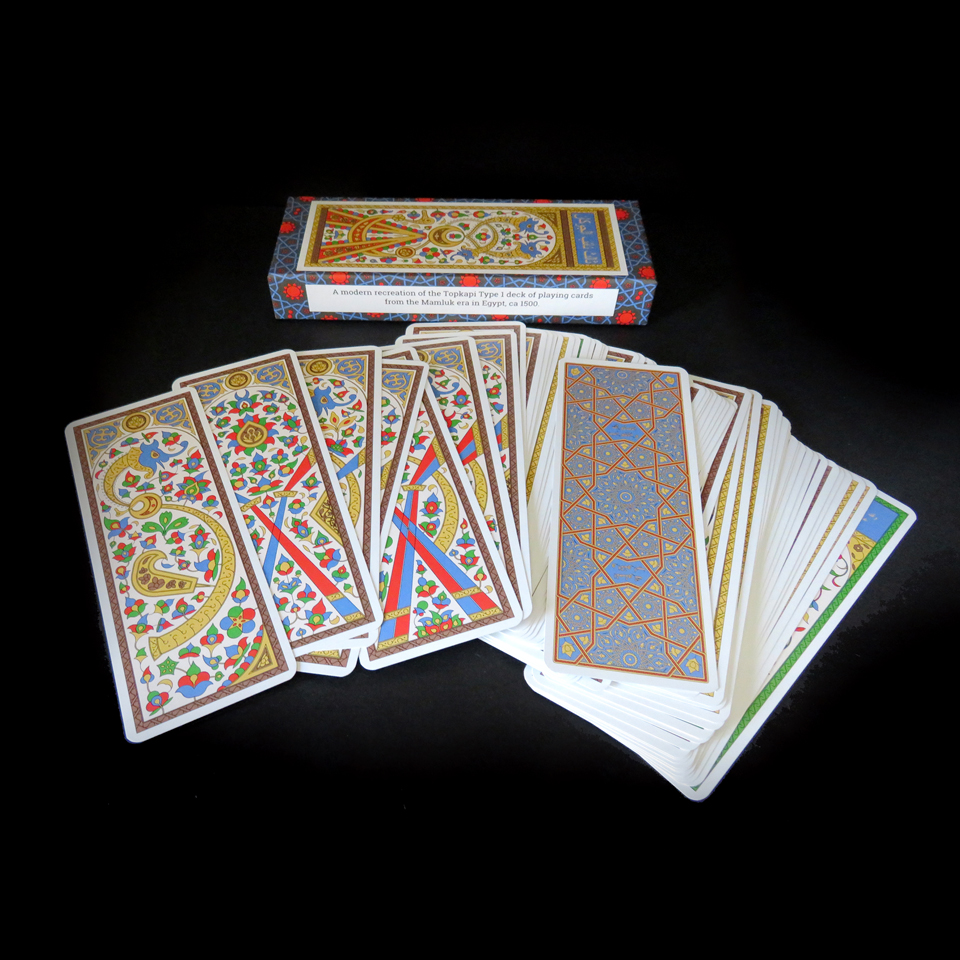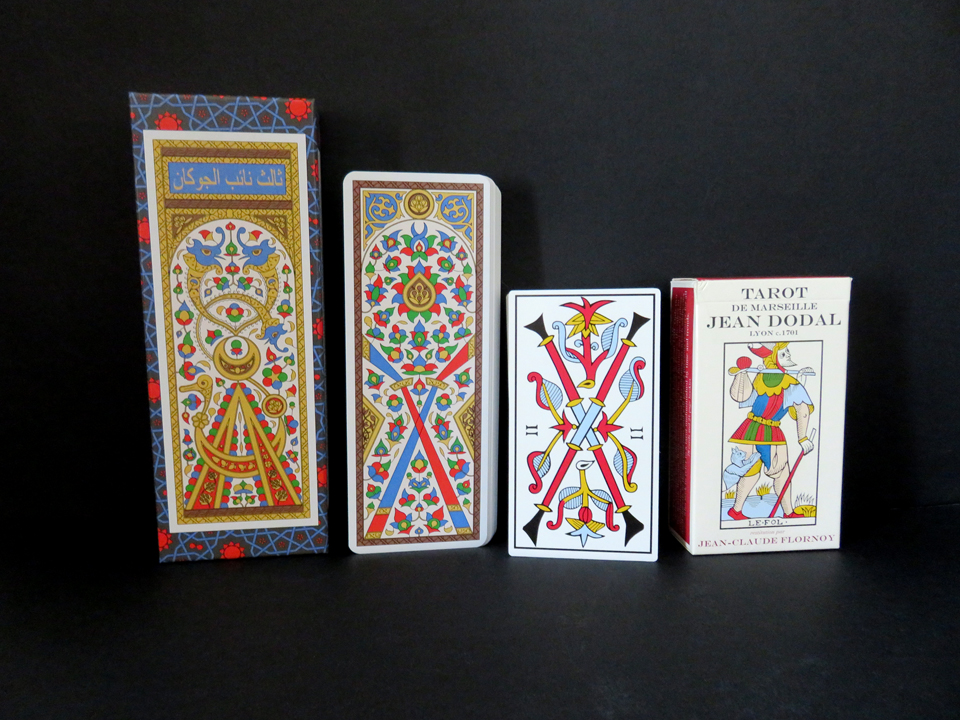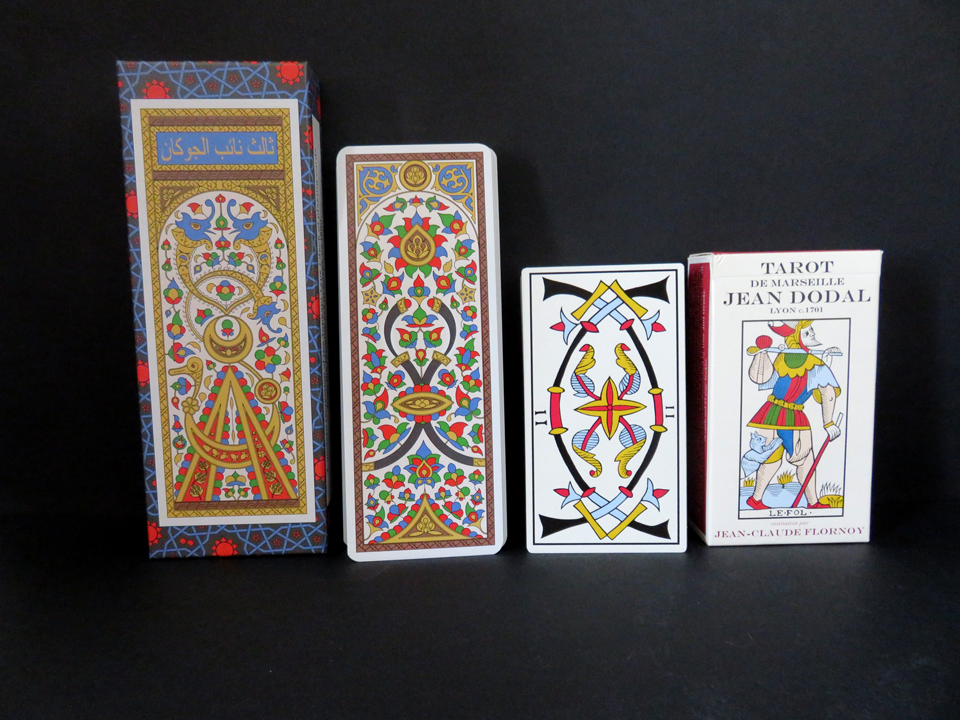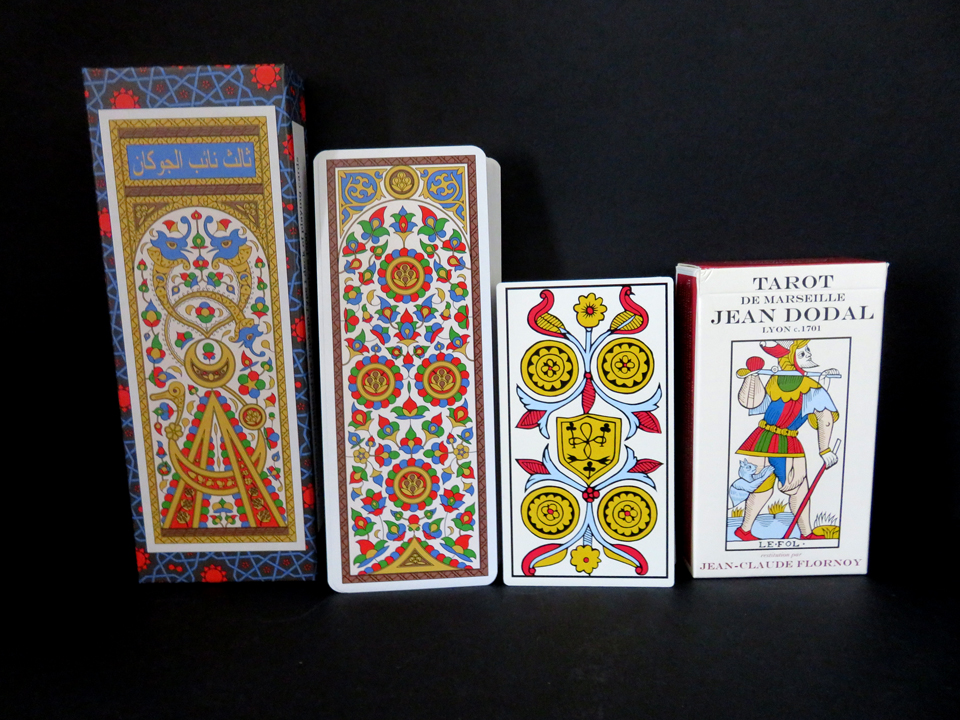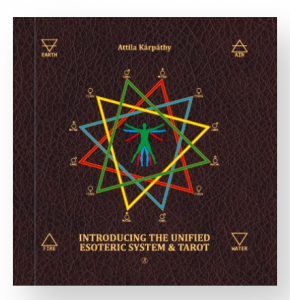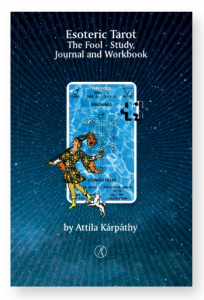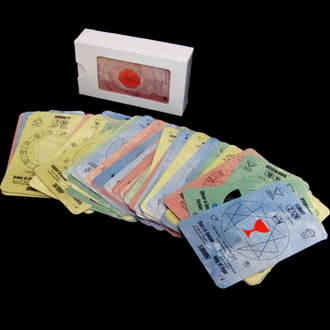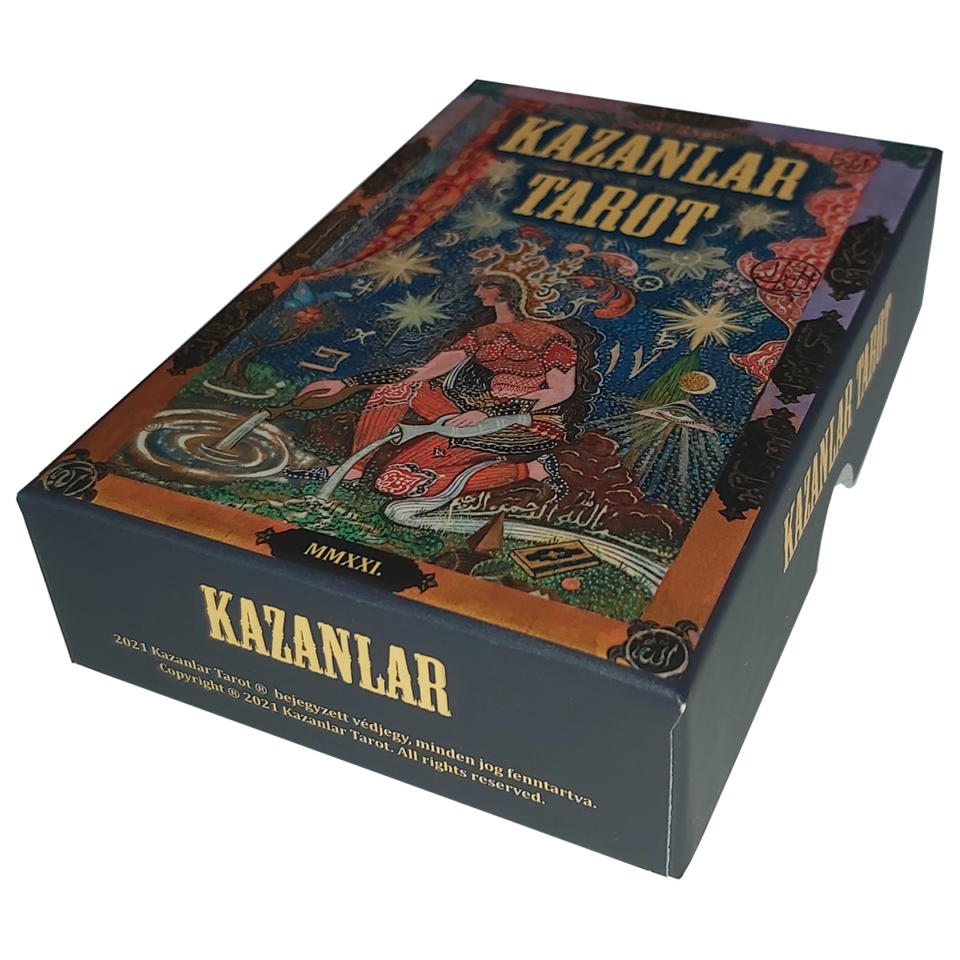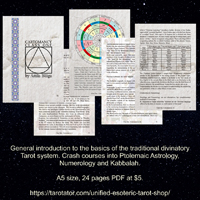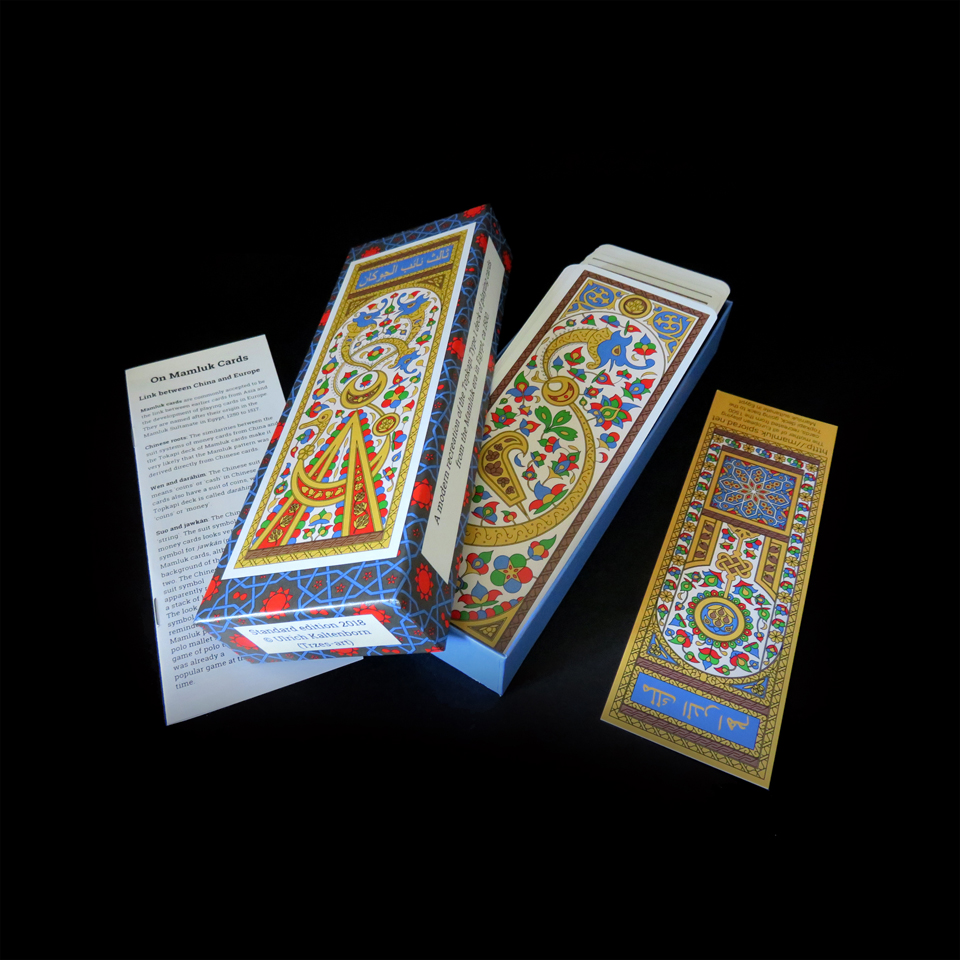
The early history of playing cards in Western Europe was related to the invasion of North Africa, Spain and Sicily by Islamic forces during the Mamluk Sultanate which lasted from the overthrow of the Ayyubid dynasty in 1250 until the Ottoman conquest of Egypt in 1517.
The period coincided with the Nasrid Kingdom of Granada in Andalusia, the last Islamic stronghold in the Iberian Peninsula. Spain was the point of contact with the Arab world, where cultural, military and commercial interactions occurred. The game of cards became established in most West European countries by c.1375 and was being banned by the authorities shortly afterwards which suggests their rapid popularity.
One of the known oldest deck, dating from the 15th century, was discovered by Leo Aryeh Mayer in the Topkapı Palace, Istanbul, in 1939. This deck consist of large cards which measure 252 x 95 mms. The deck is divided into four suits, with thirteen cards each, resulting in a complete deck of fifty-two cards. Other scholars and researches claim that each suit contains ten pip cards and four court cards each, making a total of fifty-six cards. While the traditional deck of playing cards, generally consist of only fifty-two cards, respectively only three court cards, the assumption of four court cards is further interesting because the only the Tarot deck has four court cards. Actually, this is a very exciting topic regarding the playing cards – Tarot deck relationship and which one of them was created first.
Unfortunately, the rules to play the game are lost, but it is believed to be a trick-taking game similar to the Tarot but without the trumps.
The pattern of the design of the Topkapi deck was transposed into the design of the pip cards of the oldest knew Tarot deck, the Cary-Yale Visconti Tarot deck and later into the pattern of the so-called Tarot of Marseille.
Talking about the beginning of the project, Ulrich Kaltenborn explains: “when I started this project late in 2013 the only deck of Mamluk cards that had been available was the Facsilime by Jan Bauwens, published by Aurelia Books in 1972. This deck as well as the second print run from 1977 have long been out of print and are now very expensive and hard to find. The more pleased was I when I managed to get a copy of this deck. Not only are the Mamluk cards an important part of playing card history, but the Topkapi deck in particular also is plain and utterly beautiful. The facsilime includes hand-drawn recreations of the missing cards that very neatly pick up the look and feel of the original cards.”
The Trzes’ Mamluk deck is a complete reconstruction of the type 1 cards from the Topkapı deck. It is based on the assumption that this deck has had initially four court cards per suit and therefore contains fifty-six cards.
Ulrich Kaltenborn did a marvellous job and the amount of reach details on the cards is incredible.
Card size: 2.79″ x 7.48″, respectively 71 x 190 mm.
Card stock: 310 gsm.
Available from late March 2019 for 38 Euros plus 9 Euros worldwide shipping at https://shop.spiorad.net/
Website: http://mamluk.spiorad.net/shop.htm
Facebook: https://www.facebook.com/Trzes-art-792312557637618


